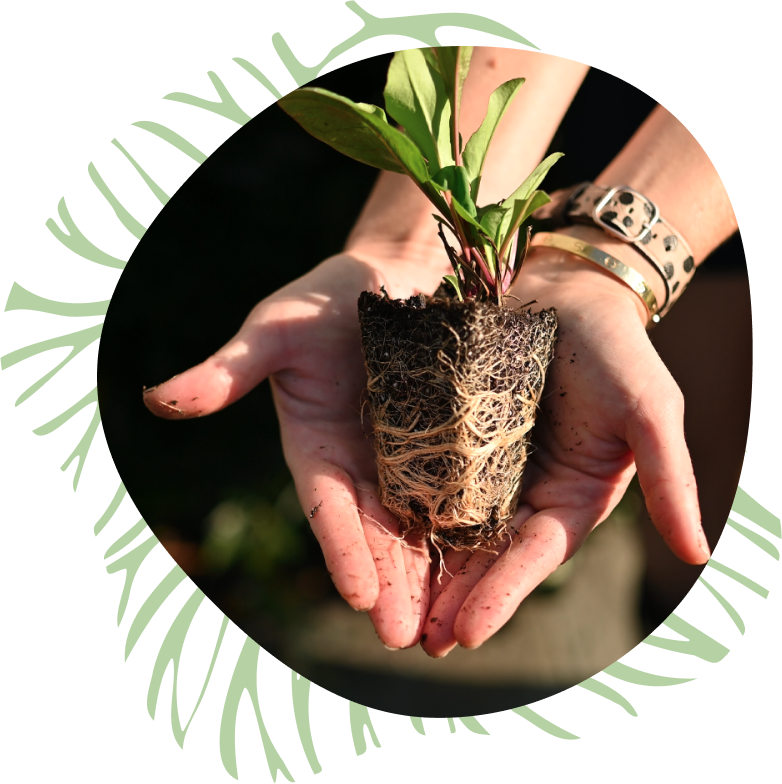Our Roots Run Deep
Garden for Wildlife™ is America's largest, longest-running movement dedicated to helping local wildlife and wild spaces.
Since 1973, this initiative launched by the National Wildlife Federation has educated and empowered people across North America to create thriving habitats for birds, bees, butterflies, and other wildlife. Founded on the belief that everyone can enjoy and protect wildlife, the Garden for Wildlife program has provided simple steps and resources to make a big impact for local and migratory species for more than 50 years.

50 Years of Garden for Wildlife
Today, the Garden for Wildlife movement engages approximately seven million wildlife gardeners in planting with a purpose—doubling the abundance of butterflies, birds, pollinators, and other wildlife at each site.
Uncover how the movement has grown over five decades.
1936
The Groundwork
The National Wildlife Federation is born and becomes the United States' largest private, nonprofit conservation education and advocacy organization, with over six million members and supporters, and 51 state and territorial affiliated organizations.

Early 1970s
Planting the Seeds
Two U.S. Forest Service scientists conduct a study on converting residential properties into havens for native species.
Their findings: The basic principles applied by wildlife managers to large-scale habitats—providing food, water, cover, and places for animals to raise young—also work on small-scale backyards.

1973
Taking Root
The Endangered Species Act becomes key wildlife conservation law, preventing the extinction of the American bald eagle, Florida panther, and hundreds of other at-risk species.
That same year, the National Wildlife Federation launches Garden for Wildlife™ to connect people with nature and help wildlife just outside their doors.
Garden for Wildlife’s signature program, Backyard Wildlife Habitat® (now Certified Wildlife Habitat®), begins formally recognizing citizens committed to planting native plants to provide essential habitat elements.

1989
Campus Ecology
The Campus Ecology program of the National Wildlife Federation initiates collaborations with colleges and universities to promote sustainability initiatives on campus, encompassing projects focused on sustainable landscaping and habitat protection.

1996
Schoolyard Habitats
In 1996, the NWF Schoolyard Habitats® program was created to meet the growing interest and distinct needs of schools and school districts in creating and restoring wildlife habitat on school grounds.

1998
Community Wildlife Habitats
On May 1, 1998, the National Wildlife Federation designated Alpine, California as “America’s First Community Wildlife Habitat.”

2018
Sacred Grounds
In 2018, the National Wildlife Federation launched Sacred Grounds™, a program engaging places of worship in sustaining wildlife habitats. This effort not only advances faith-based environmental stewardship practices but also promotes community-wide involvement.

2021
Bringing Plants Home
Garden for Wildlife begins offering curated native plant collections designed to help the most birds, bees, and butterflies.

2023
Giving Back
Garden for Wildlife launches one-for-one business model, donating one native plant for every plant purchased.

2025
Growth
Garden for Wildlife expands to cover 48 U.S. states and Washington, DC, achieving our years-long goal of shipping coast to coast.

Join the Movement
1. Plant a Wildlife Garden
Find the perfect plants for your region, and get step-by-step planting guides.
2. Bee the Change
Inspire others by sharing your native plant journey with us and educating your community on the many benefits of native plants.
3. Nourish Your Mind
Explore our library of resources and master the knowledge of native plants and sustainable gardening.